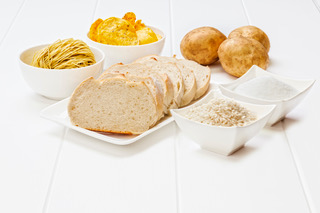To give your body the best fighting chance of converting food we eat into long-lasting energy and “Eating for high energy levels,” follow the Eatwell guide.
A healthy balanced diet, like that in the ‘Eatwell Guide,’ provides your body with everything it needs to keep working well.

To give your body the best fighting chance of converting food we eat into long-lasting energy follow Eatwell guide. Eat a variety of different foods daily to obtain all your vitamins and minerals. A healthy balanced diet, like that in the ‘Eatwell Guide’ provides your body with everything it needs to keep working well. A balance doesn’t have to be achieved at each meal, but over 24 to 48h.
Get Vitamin B
Most of vitamins from vitamin B group help us release energy from food we eat. They are essential nutrient to keep us energised. One of the signs of deficiency includes fatigue. If you keep your diet varied and stick to Eat Well plate rules listed above you will get all the vitamins B you need and won’t have to take supplements. Vitamin B12 is lacking when it comes to vegan diet. Vegan sources of B12 include nutritional yeast, Marmite, fortified dairy alternatives and fortified breakfast cereal. You need about 1.5 micrograms of B12 per day. If you are vegan and don’t consume foods listed above you might want to take daily supplement or get B12 injections.
Sugar Rush … and Crush
You might think that reaching for a can of coke or a chocolate bar might give you a burst of energy. Unfortunately, reaching for a handful of simple carbs will give you short release of energy, then make you want to crawl under the blanket. Unless you are an athlete needing to fuel a high-intensity workout or a long-distance runner having to re-fuel on a go, give simple sugars a miss as often as you can.
Flatten the curve… low GI index foods
First thing that comes to my mind when it comes to squeezing the most long-lasting buzz out of our food and avoiding post-meal slump in energy is GI index. Each carbohydrate-containing food has its own GI rating. From zero to 100 (zero being hero), it tells us how quickly eaten food will raise out blood sugar levels. Anything from 55 below which give us a nice and steady energy release. Anything from 70 and above will make us want to have a nap shortly after we have eaten it.

I’m not the best at drawing… but you get what I mean.
Low GI (55 and below) food include: basmati rice, quinoa, sweet potato, oats, beans, chickpeas, nuts, most fruits and vegetables. Cooking increases GI index so keep your risotto and pasta al dente. Adding protein will also lower GI index, so have some fruit with natural yoghurt and put that piece of salmon on your salad. Fiber containing foods tent to have lower GI index. It is because fiber slows down sugar release into the bloodstream. Whole orange always wins over glass of OJ. Choosing low GI foods not only helps you stay alert, but also keeps you fuller for longer and aids weight loss.
Here is a link to Low GI recipes: GoodFood
The Fountain of Life
Everyone knows that water maintains life and one of the symptoms of dehydration is tiredness. But why are we go bad at staying hydrated? An adult needs approximately 35ml of fluid per kilogram of body weight. It means that if you weight 60kg you need 2100l of fluid per day. This doesn’t mean that you need to get though 2l of pure H20 every day! No no no! That’s such a common misconception. We will be hydrated by soup, milk, yoghurt, tea, coffee, herbal teas, squash, watermelon, grapes, cucumber, tomato… just to name a few. Two things to bear in mind. Don’t rely on sugary drinks for hydration and don’t overdo it – yes you can drink too much water and become sodium depleted.
Caffeine Kick
There is nothing better than a smell of freshly brewed coffee in the morning. Caffeine stimulates our central nervous system and helps us fight fatigue. Although, classed as psychoactive drug, it is impossible to overdose on in a drink form. You would have to drink 50 cups in a day to reach a toxic level. It is also a myth that coffee is dehydrating or affects our cardiovascular health. Caffeine is available in tablet form for those who don’t like coffee, black tea or green tea. Pregnant ladies need to limit their caffeine intake. Now we have all the facts right, let’s raise a cup of coffee to our energy levels!
Will it give you wings?
Supermarket’s fridges are filled to the brim with energy drinks. Should you reach for them when you feel that you are lacking energy? I’m a bit sceptical. First of all, they are full of sugar. Their main ingredients are caffeine and vitamins from B group. We already discussed them and you know how to obtain those without having to drink a bag of sugar and other nasties. Some energy drinks also contain taurine and ginseng. Studies shown that quantities of those ingredients are far too low for use to be able to feel any therapeutic benefits. In conclusion… have yourself couple of quid and have a power nap instead!
To wrap it all up… eat well, stay hydrated, watch GI index of the carbs you eat and have a cheeky espresso and you should be as energised as a Duracell bunny!